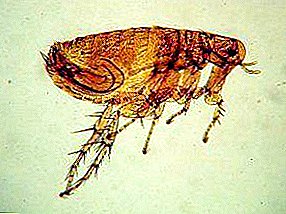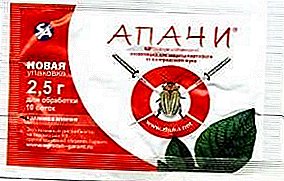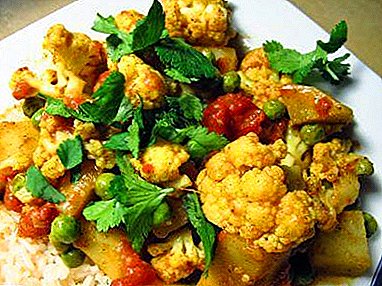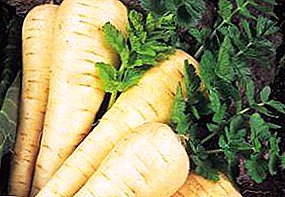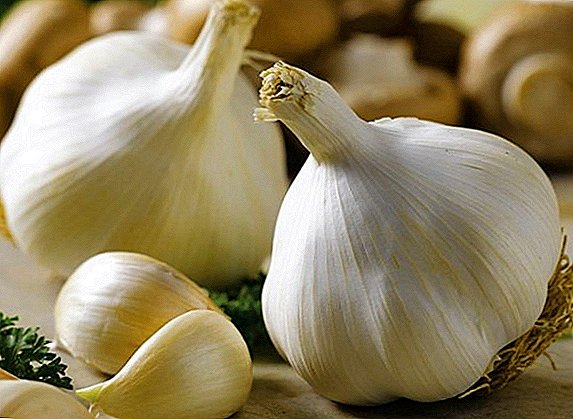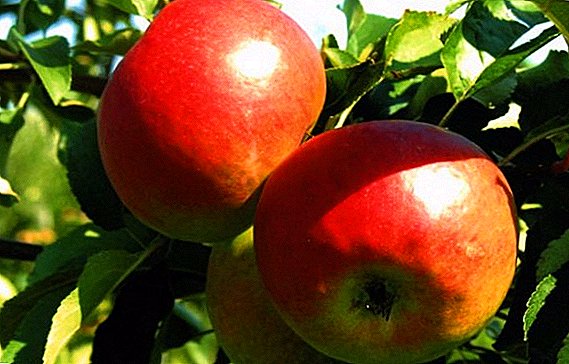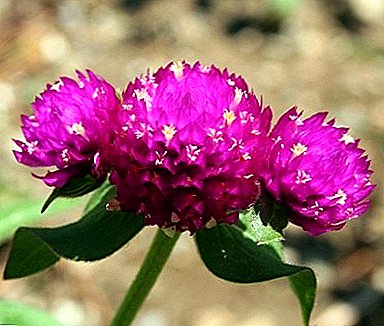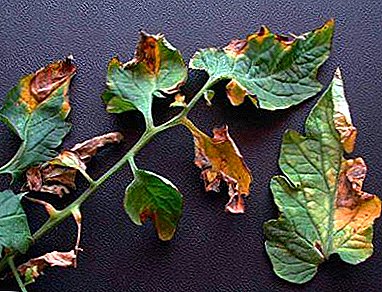
What does summer associate with us? First of all, with fresh fruits, vegetables and berries.
And what summer will be without grapes ?! Of course, you can go to the store and buy the well-known white kishmish, but you can still grow grapes on your own plot. At the same time you will be absolutely sure of its naturalness and enjoy the great taste.
As this variety for planting, you can choose the grapes "Lancelot". He will not disappoint. Let's take a closer look at this particular grape variety.
Description of the grape variety "Lancelot"
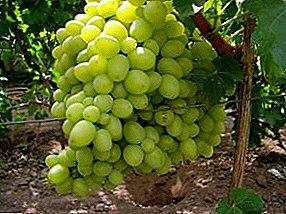
"Lancelot" - table grapes. A hybrid of three varieties - "Gift Zaporozhye", "Ecstasy" and FV-3-1. "Lancelot" refers to early average grape varieties, as it ripens in 125 - 130 days.
Bushes vigorous, vine matures almost the entire length of the shoot. Flowers bisexual. The clusters are very large, conical, fairly dense.
On average, the mass of one cluster varies from 0.9 to 1.2 kg, but sometimes it reaches 3 kg. The berries are large, oval in shape, 31.0 x 22.3 mm in size, weight reaches 14 g.
The color of the skin depends on the amount of sunny color, because under the influence of the sun the milky-white color of the berry will acquire a tan. But such a change in color can worsen the presentation of the bunch, so the leaves should not be removed.
The flesh is fleshy, with a harmonious sweet-sour taste, where there are honey notes. Even with an excess of moisture in the soil, the berries will not crack, this bunch will not lose its magnificent presentation. The appearance and taste of the berries will not change during transportation and long-term storage on courses.
Yield "Lancelot" hightherefore, if necessary, reduce the load on the bushes. There is a high frost resistance (minimum temperature of -24 ° C) and resistance to fungal diseases, various parasites.
Virtues:
- excellent taste and appearance of berries
- high frost resistance
- bountiful harvest
- resistance to mildew, oidium and insects
disadvantages:
- in the sun, the appearance of the berries can deteriorate by changing the color of the skin
About the features of planting varieties
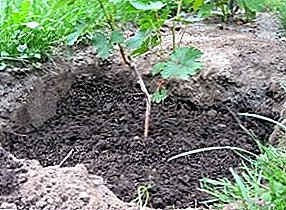
It is known that grapes can be planted in the fall and spring. But "Lancelot", despite its enough high frost resistance, can badly experience the spring frosts. And especially if the grapes are still in saplings. Therefore, it is preferable to plant "Lancelot" from mid-September, when the temperature is still kept at the level of summer weather.
Each seedling should be at least 50 cm long, with a developed root system, each root should be 10-15 cm long, and well-matured buds should be seen on the shoot. Be sure to review the seedling for damage by insects, as well as fungal diseases.
For landing digs a hole under each seedling. The pit size is 0.8x0.8 m. A mixture of fertile soil with humus and fertilizers is laid at the bottom with a layer of 30 cm. Before planting, you need to trim the ground part of the shoot so that 4 - 3 peepholes remain, and also shorten the roots by 10-15 cm.
From the lower layer of soil in the pit you need to form a mound, on which you need to put a sapling heel. Next, you need to fill the pit with earth to a level that approximately coincides with the middle of the seedling, compact this earth and pour it with one bucket of water. After the water is completely absorbed, the pit must be completely filled up.
It is also interesting to read about grape transplantation in the fall.
Tips for caring for the variety "Lancelot"
- Watering
There are two types of irrigation: water recharge and vegetative. The first is necessary to create a reserve of moisture in the soil. Water recharge irrigation is the first step in preparing the bushes for the winter; it is carried out after harvesting before falling leaves.
If there is little precipitation in winter, water recharge irrigation should be repeated in early spring. The amount of water is calculated as 100 - 120 liters per 1 sq. M.
As for vegetative irrigation, they need to be done a few. First time bushes need to water after flowering, the second - before the berries began to color me and become softer. Per 1 sq.m. Approximately 50 - 55 liters of water should go away. If the spring is dry, then the Lancelot will have to be watered in late April - early May.
You can not water the grapes during flowering, otherwise the flowers will be much showered. It is necessary to stop the procedure of saturation of the soil with water 2 - 3 weeks before harvesting. Often, around each bush is a groove into which water is poured. But this is the case of a single planting of grapes. If the bushes are planted in rows, then water should be poured into the furrows.
- Mulching
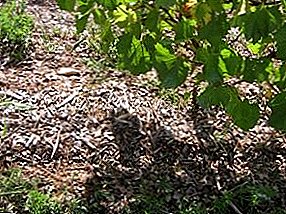
The first time mulching should be carried out immediately after planting the seedlings.
Covering the pit with straw, leaves, ash, or other organic materials will help conserve water at the landing site. It is necessary to mulch the earth further in the spring, when the eyes bloom.
A circle with a radius of 50 cm must be covered with a layer of straw, sawdust, fallen leaves. In addition, you can use black polyethylene, cardboard, roofing felt. Be sure to cover the soil with mulch for the winter, before sheltering grapes!
- Harboring
Despite the fact that "Lancelot" can withstand temperatures down to -24 ° C, the bushes need to cover for the winter. This should be done before the first frost, around early to mid-November.
Vines need to be tied, laid on the surface and plentifully covered with earth. But this method can be applied in conditions of not very severe winters.
If strong frosts are typical for the region, then the vines laid, tied and fixed with iron brackets (so as not to rise from the ground) should be covered with wooden shields, setting them with a "house". From above, this construction is covered with plastic wrap, which on the sides must be covered with earth.
Instead of wooden shields, metal arcs can be used, on which one or two layers of plastic film are stretched. On the sides of it also need to sprinkle with earth to secure.
- Pruning
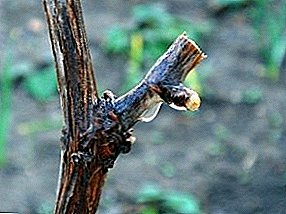
Pruning grapes contributes to the fact that the amount of the crop increases, and the taste of the berries also changes for the better.
It is better to cut the bushes in the fall, when they are already “falling asleep”, that is, the juice slows down over the vines.
When pruning young saplings, it is enough to trim the excess shoots and simply form a shrub, leaving between three and eight fruit-bearing arms.
On the “adult” bush, you need to arrange 6 - 8 little eyes. In total, one to each bush should account for 30 - 35 eyes.
So the branches will not be overloaded, and the appearance and taste of the berries will not change.
- Fertilizer
For young bushes extremely organic fertilizers are important.
Every two to three years in the fall it is desirable to introduce organic matter - compost, humus, bird droppings, etc. It is made with the calculation of 2 kg per 1 sq.m. In addition, young bushes need nitrogen to increase growth. Therefore, in the spring it is necessary to make nitrogen fertilizers with the calculation of 50 g per 1 sq.m.
Already, “adult”, fruitful grapes, fertilizers are needed to increase the mass of the bunch and improve the taste of the fruit. Therefore, every 3 to 4 years in the fall it is necessary to add organic matter (5 to 6 kg per 1 square meter), potash and phosphate fertilizers.
- Protection
Despite the fact that Lancelot is resistant to fungus diseases, as a preventive measure, bushes can be treated with a 1% solution of Bordeaux liquids strictly before flowering, when there are 4-5 leaves on the shoots.
To prevent oidium, the bushes should be sprayed with fungicides, for example, Strobe, Quadris, Fundazole and others.


